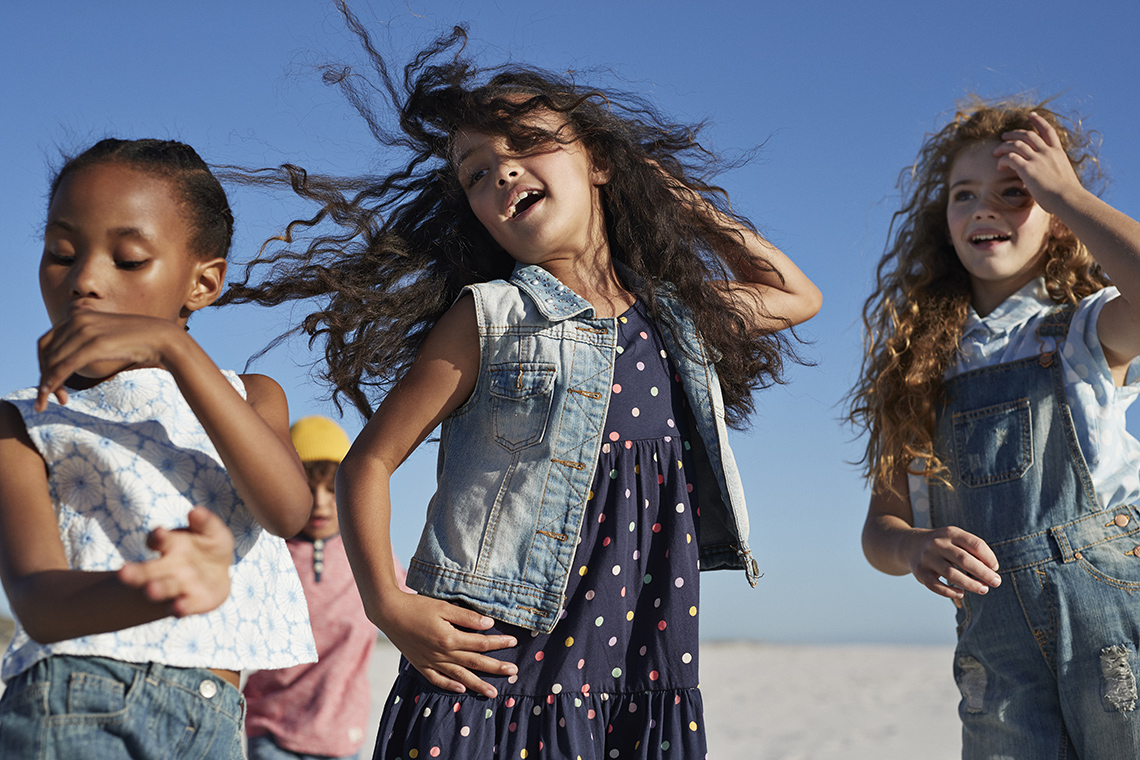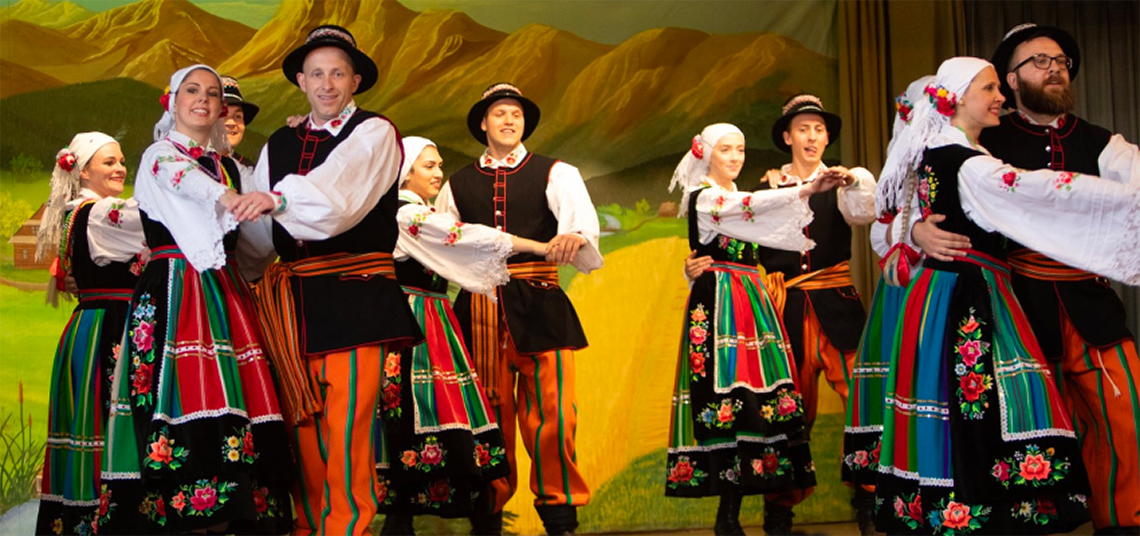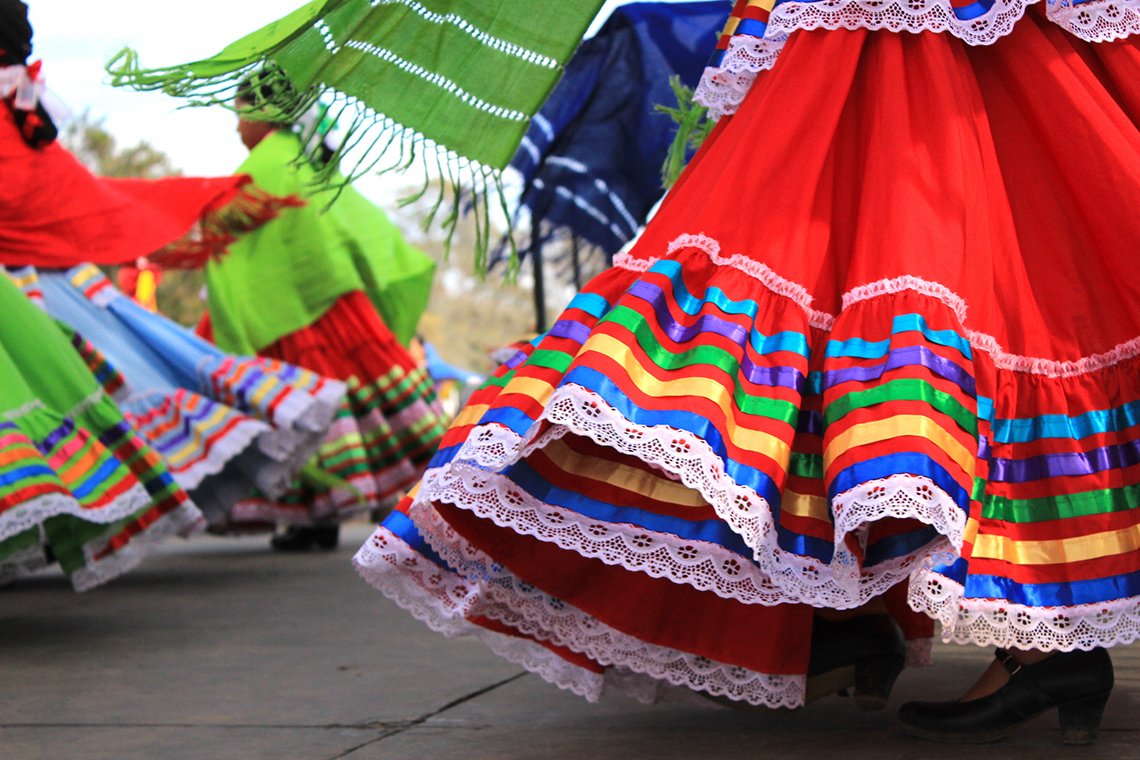Minds On
Today’s vocabulary

Press the following tabs to access today’s vocabulary.
The instrument of dance. The term body may also describe the body’s position or shape (e.g., curved, straight, big, or small); also, how the body is moving (e.g., using locomotor or non-locomotor movements).
The space in which the body moves; includes the area around the body and the larger dance space.
An element of dance that includes rhythm, tempo, accent, and duration.
- rhythm–patterns of movement and rest
- tempo–how fast or slow a movement is performed
- accent–a strong movement or gesture used to create emphasis or focus
- duration–how long a movement lasts
The force or power with which the body moves (e.g., heavy/light, sharp/smooth, tight/loose).
The way in which dancers move with other dancers, objects, or props (e.g., together, in front of, behind, inside, or around).
The route or movement taken from point A to point B; or a pattern or design created on the floor or in the air by movements of the body (e.g., the arm moving in a circular motion creates a circular air pathway; galloping across the general space in a zigzag motion creates a ground pathway). The following are some examples.
- air pathway
- ground pathways
Let’s get started!
Check out this video entitled ”French-Canadian Folk Dancing” to learn more about it.
DescriptionGroup of children dancing a French-Canadian folk dance. The dance begins with one group of dancers entering the stage in a straight diagonal line from the front and the other group of dancers entering the stage in a straight diagonal line from the back. The two groups begin step hopping towards one another and weave in and out of each other’s line. Then, the groups separate and form two circles of dancers holding hands. Each group first gallops sideways in the circle clockwise, and then changes direction and gallop sideways counterclockwise.
What do you notice about the use of space the dancers use?
For example, what kind of pathways do the dancers take when they are moving through the space?
Record your ideas in a notebook or another method of your choice.

Action
Get ready, get set…

The five elements of dance can be used to create interest, variety, patterns, and mood within dance.
The five elements of dance are: body, space, time, energy, and relationship.
Explore the following video entitled “French-Canadian Folk Dancing” to learn more about this dance.
Let’s try to notice the elements of dance in the video.
DescriptionGroup of children dancing a French-Canadian folk dance. The dance begins with one group of dancers entering the stage in a straight diagonal line from the front and the other group of dancers entering the stage in a straight diagonal line from the back. The two groups begin step hopping towards one another and weave in and out of each other’s line. Then, the groups separate and form two circles of dancers holding hands. Each group first gallops sideways in the circle clockwise, and then changes direction and gallop sideways counterclockwise.
Did You Know?
Did you know?

French-Canadian folk dance is a fast-paced form of dance that began in Quebec, in the mid-1800s. People from the lumber camps and villages would perform this dance.
Today, step dancing is danced in competitions and performances for entertainment.
It is an important form of dance to keep alive, as many of the movements were passed down from generation to generation.
Elements of dance

After exploring the video clip, let’s notice how the dancers use the elements of dance.
Consider the elements of dance and how they are used in the “French-Canadian Folk Dancing” video.
You may explore the “French-Canadian Folk Dancing” video clip if needed.
Press 'Hint' to access a detail.
The elements of dance are:
- body (locomotor and non-locomotor moves and body zones)
- space (pathways and directions)
- time (tempo)
- energy (force and quality)
- relationships (interconnected or linked shapes)
Complete the French-Canadian Folk Dancing Activity in your notebook or using the following fillable and printable document. If you would like, you can use speech-to-text or audio recording tools to record your thoughts. Consider adding your work to your dance portfolio.
French-Canadian Folk Dancing Activity
How is each element (body, space, time, energy, and relationships) used in the French-Canadian folk dance?
Record your thoughts and what you noticed in the following organizer or another method of your choice.
|
Elements of dance |
My thoughts and ideas |
|---|---|
|
Body (locomotor and non-locomotor moves and body zones) |
|
|
Space (pathways and directions) |
|
|
Time (tempo) |
|
|
Energy (force and quality) |
|
|
Relationships (interconnected or linked shapes) |
Press the ‘Activity’ button to access French-Canadian Folk Dancing Activity.
When you are ready, press 'Let’s Check!' to access sample responses for the “French-Canadian Folk Dancing Activity.”
|
Elements of dance |
My thoughts and ideas |
|
Body (locomotor and non-locomotor moves and body zones) |
|
|
Space (pathways and directions) |
|
|
Time (tempo) |
|
|
Energy (force and quality) |
|
|
Relationships (interconnected or linked shapes) |
|
Go!

Learning check!
Now that we have explored how the elements of dance are used in the French-Canadian folk dance piece, let’s reflect on the following questions.
Select the correct answer, then press ‘Check Answer’ to see how you did.
Polish folk dance
There are many different folk dances around the world. We will explore the Polish folk dance, which is the national dance of Poland.

A traditional Polish folk dance performance by the Polonia Polish Folk Dance Ensemble of Regina, Saskatchewan.
Dancers in traditional and colourful outfits dancing a traditional Polish folk dance on a stage. The dancers are in partners and holding holds, their bodies facing each other, and heads facing forward to their audience.
The dance is an important part of Polish history and culture. There are several different styles of Polish folk dances, but they are all happy and energetic styles of dance.
Many people perform Polish folk dances at cultural festivals and events.
Access this video entitled “Piast Polish Dance Ensemble” to learn more about this Polish Folk dance.
While exploring the video, consider how the elements of dance are used.
DescriptionGroup of children on an outdoor stage dancing a Polish folk dance. The dancers are in a circle facing each other and holding hands. They bend their knees and walk backwards, then join hands with a partner. Partner groups move to each side of the stage and face each other in a line. Their inside arms are behind each other’s back and their outside arms are holding hands in front of their bodies. Each partner lifts each leg upwards while returning to the back of the stage in a line to form two groups. Each group and partner lifts each leg upwards, while slowly moving towards the other group, and crossing paths with each other. They turn around and repeat the crossing of the stage again.
After exploring the Polish folk dance video clip, consider how the elements of dance are used in the performance.
Complete the Polish Folk Dance Activity in your notebook or using the following fillable and printable document. If you would like, you can use speech-to-text or audio recording tools to record your thoughts. Consider adding your work to your dance portfolio.
Polish Folk Dance Activity
How is each element (body, space, time, energy, and relationships) used in the Polish folk dance?
Record your thoughts and what you noticed in the following organizer or another method of your choice.
|
Elements of dance |
My thoughts and ideas |
|---|---|
|
Body (locomotor and non-locomotor moves and body zones) |
|
|
Space (pathways and directions) |
|
|
Time (tempo) |
|
|
Energy (force and quality) |
|
|
Relationships (interconnected or linked shapes) |
Press the ‘Activity’ button to access Polish Folk Dance Activity.
Portfolio
Folk dance elements

After noting the elements of dance used in the Polish folk dance, let’s focus on why the elements of dance are so important.
Dances use certain elements to create variety and keep the dance interesting.
Recall how the elements used in the Polish folk dance did that.
1. Choose two elements of dance from the following checklist.
Elements of dance checklist
2. Describe how the two elements are present in the Polish folk dance, and how it makes the dance interesting.
Record your thoughts and ideas in a notebook or another method of your choice.
Consider adding this description to your portfolio.
Consolidation
Folk dances

Throughout this learning activity, we explored two different folk dances:
- French-Canadian folk dance
- Polish folk dance
Choose two of the following questions to respond to about each folk dance.
- What part of the dance pieces did you find the most interesting?
- What element(s) of dance made these the most interesting parts for you? Why?
- What mood do you think the dance pieces are showing?
You may explore the folk dances and their video clips from the Action section, if needed.
Complete the Folk Dance Activity in your notebook or using the following fillable and printable document. If you would like, you can use speech-to-text or audio recording tools to record your thoughts. Consider adding your work to your dance portfolio.
|
Questions |
French-Canadian folk dance |
Polish folk dance |
|---|---|---|
|
What part of the dance pieces did you find the most interesting? |
||
|
What element(s) of dance made these the most interesting parts for you? Why? |
||
|
What mood do you think the dance pieces are showing? |
Press the ‘Activity’ button to access Folk Dance Activity.
Portfolio
Review your learning
Which dance would you like to learn more about? Why?
Record your ideas in a notebook or another method of your choice. Consider adding your work to your dance portfolio.

Reflection
How do you feel about what you have learned in this activity? Which of the next four sentences best matches how you are feeling about your learning? Press the button that is beside this sentence.
I feel…
Now, record your ideas about your feelings using a voice recorder, speech-to-text, or writing tool.